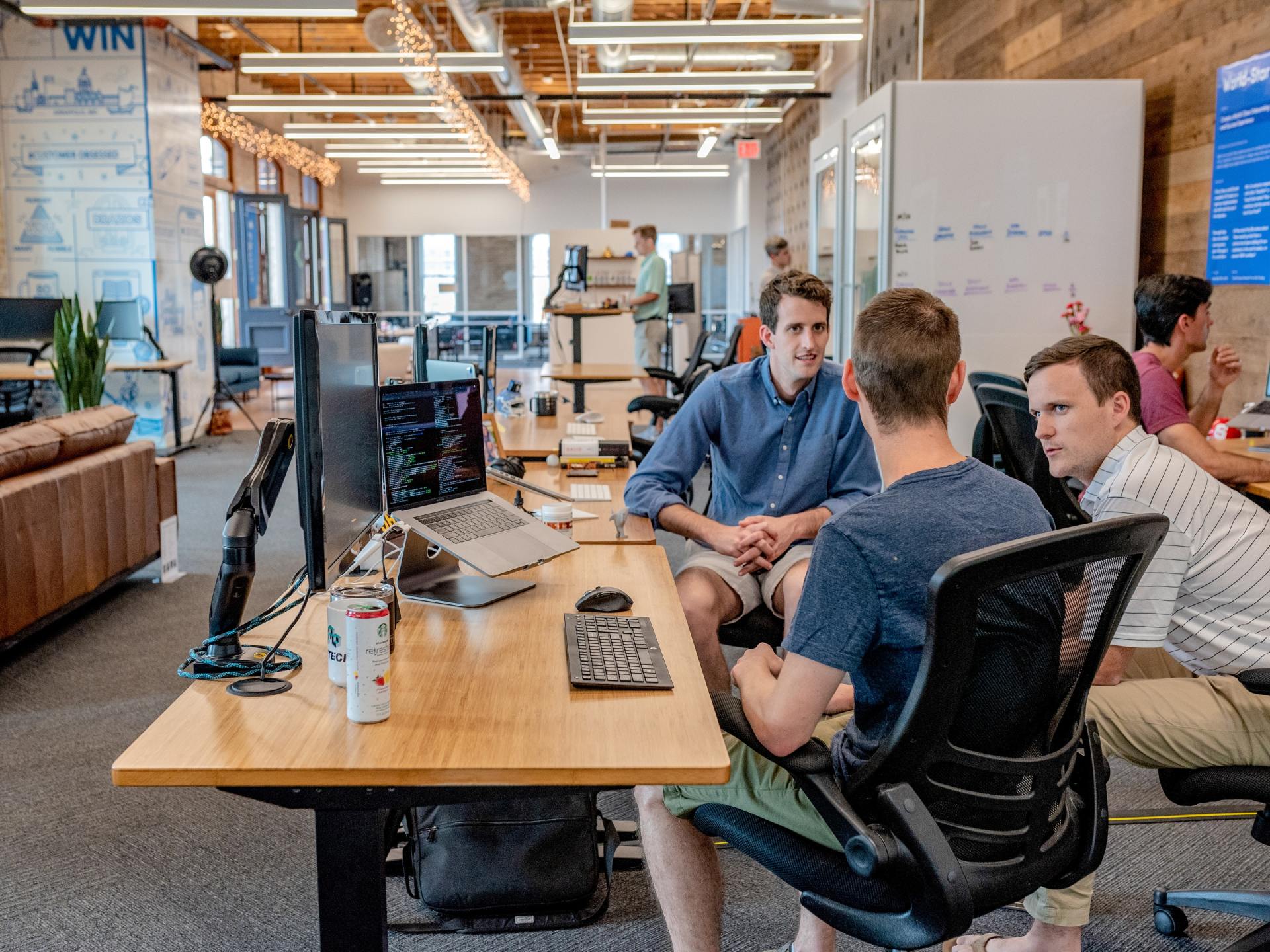De-risking innovation
- By Mark Aikman
- •
- 12 Nov, 2018
- •
10 ways to reduce exposure

With technology, if we stand still, we go backwards. But equally, as CIOs we need to be sure we’re deploying the right technology, in the right way. In this article, published by Horizon CIO Network on 15 November 2018 athttps://horizoncio.network/de-risking-innovation/Mark Aikman explores how to avoid the greatest risks when introducing new technology.
Everyone around us – from customers, to employees, to C-suite peers - now takes for granted the continuous evolution and transformative capabilities of technology. Not surprising, because as consumers they are offered re-engineered phones, doorbell apps and AI kettles in every ad-break.
The whole population now knows that technology can be made to evolve rapidly. Therefore, we all simply expect that the necessary technology will be waiting in the wings to deliver any workplace specification that we can dream up. Expectations of content and speed are incredibly high.
For the CIO, this can present a minor migraine. The CEO or SLT will identify a business need and then someone is bound to say: “surely there’s already an app for that?”. There is an expectation that technology moves so rapidly that anything that doesn’t already exist can be built smoothly and swiftly.
In this situation, it’s the CIO’s job to:
· First and foremost, deliver what the business needs
· Take ownership of that innovation and delivery
· Manage expectations of what can be done; and by when…
… and all that with no loss of credibility.
Therefore, I’m offering the following checklist for de-risking any innovation that is based on the assumption that technology can do anything we want it to…:
1) Get to the truth behind the statement
The first step is to identify how genuine the need is to the business. Is it a real need, giving us an edge with our customers or in our sector? Or is it just a whim; or perhaps a knee-jerk ticking of the box on technological innovation?
Ask open questions of those people who are stating that we have this need. Why do we need it, what will it do for the customers, where will we use it? Check how robust this idea is. If there’s lot of on-the-hoof response, don’t rush into any action – instead move to quantifying the need/benefit first.
2) Define what success will look like
There will have been senior-level discussion of what the innovation will do; what it will look like; and what results it will achieve. However, it’s likely that each member of the SLT is using a slightly different paradigm. Therefore, they will all have a slightly different view of the new opportunity and solution. Someone needs to capture these varying visions and expectations.
So before commissioning any work, sit down with all of them individually. Draw up a list of what they each imagine the technology will add, and how it will have to work for everyone to believe it is worthwhile. By asking people to demonstrate the tangible outcomes they want, they will often communicate more clearly about their expectations. You will have a more detailed picture of what the new technology needs to deliver.
3) Understand how people will use it
We all know that the people who will use our technological innovation will not use it for its true purpose and in the prescribed way unless it feels right and is easy.
Therefore, the next step is to collect information on how people carry out the affected task(s) now; how they break the rules; what they skip; and how they corrupt processes by what they do. You can then build-in workround-prevention.
4) Don’t reinvent the wheel
Let’s be honest: most CIOs are not really at the bleeding-edge of technological advancement. Therefore, it’s likely that the technology we need already exists – even if it’s not yet in quite the right configuration.
So Tip 4 is: don’t reinvent the wheel. Instead, look along the shelf of existing products first, and buy, customise or adapt something that already exists. It will save time and cost, both of which gain internal approbation, if not awards!
5) Get the best out of the people who’ll get the best out of the technology
You might not have the in-house skills to develop or customise the technology you need. If that’s the case, don’t attempt to teach yourself on the job - it’s almost always a false economy. Buy in whatever extra expertise you need.
I’ve bought-in some excellent software development from within the EU in recent years. I believe one of the massive advantages of using this type of near-shore development is the opportunity it presents to develop the product using hybrid teams – in-house people working alongside experts from the partner company. Ideas are cross-pollenated; both parties develop their own knowledge, techniques and IP; and the absolutely-right product is developed at an accelerated rate.
6) Evangelise about agile
As CIOs, we need to educate colleagues that agile development is a collaborative form of developing the right technological product. It’s building the product with the feedback woven into it – and it’s NOT imposing a half-baked solution that IT haven’t fully tested.
By gaining colleagues’ acceptance of agile development as the best way of quickly incorporating the end-user’s ideas, needs and feedback, we can reverse this unhelpful perception and engage users much more closely. And as every CIO knows, if you engage their interest before go-live, they are a so much more likely to use it effectively post-launch.
7) Fail fast
Of course, agile development assumes that the product will not be perfect first time and will need adaptation. It will, technically, fail at first. Failure is good – it gives invaluable information on precisely what is not right and needs to be adjusted. Early failure means there’s still time to amend and evolve what we’re working on.
Failing fast is an excellent step in a rapid development process. It’s just that the language is unfortunate. So be sure to use the language of “trial” and “prototype” and “model” and “pilot” and “concept” ... Officially, you’re not failing fast; you’re taking your prototype to V.2.
8) Eyes on the prize
When a company adopts a technological innovation, there’s a tendency for a myth to grow up that this is a ground-breaking development that other companies could use. A canny CEO will soon be asking whether there is a market for our technological innovation. Can we potentially sell it to partners, competitors or people in other industries?
It’s a legitimate question; and very occasionally, there might be more money to be made from the new technology than there is from continuing with our mainstream business. But that will only occur very occasionally. So by all means investigate the opportunity; and partner with Marketing to look at the potential, but keep your eyes on the prize.
Persuade the SLT that our own use of the new technology will be its proof-of-concept and that perfecting it for our use first is an essential starting point, prior to monetising it. The alternative – very quickly developing a catch-all product that suits other users or industries – is risky. First, any launch would be weakened without a successful proof-of-concept. Second, the hybrid or homogenous version we would create may not be the best fit for our own original purpose.
9) Create appetite
It is always worth de-risking by deliberately creating some increased appetite for the innovation before it goes live. Only people who believe in it will use it.
So I recommend creating some communication partnerships – such as Sales/Marketing for communicating with the customers; or the line managers of the people in the organisation who will be using it day-to-day. Understand from these partners what the likely barriers to incorporating this innovation are going to be. Tee-up the partners to start work on energetically communicating what’s going to be better. That’s “better”, not “different”.
Make sure everyone in these communication chains understands what the benefits are of the new technology to how we’ll all be working in future. These people need to be able to answer everyone’s favourite question: What’s in it for me?
There may also be a further safety net: incentivising people to adopt it.
Full and proper use of the new technology can be very effectively encouraged by making competence one of the objectives or KPIs by which staff performance is measured. Failure to use the technology, or partial/improper use, will reduce an individual’s score. It sure focuses attention…
10) Make time
I know all this sounds time-consuming and may even sound like it risks missing the innovation boat. But in reality, it’s no big deal. Interviews with SLT take only minutes; some of the persuasions can be achieved in a single conversation; and partners and colleagues can do a lot of the down-the-line work.
I firmly believe that the time invested in the above 10 steps is balanced by the risk reduction they offer; for me, it’s always worth making the time.

https://www.future-processing.com/blog/selecting-a-supplier-natural-selection/








